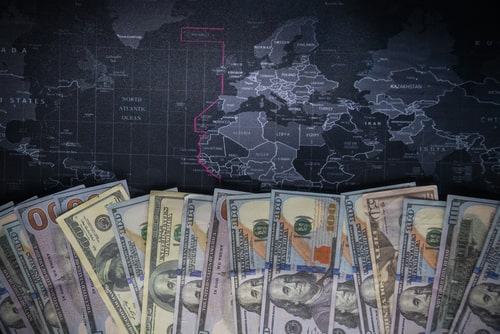Financial crimes have been in the spotlight since the early ages. From cheque frauds to online digital payment frauds, financial crimes have many forms. In the past, it was done physically like stealing cash, ATM scams, or illegitimate credit card usage. But now as mobile banking has spread its wings to all sectors, financial crimes have disrupted it also. There are many financial crimes intruding the businesses but money laundering and terrorism funding is the most sensitive one.
Money laundering is the concealment of criminal funding obtained through illegal means. Terror funding is the financial support to anti-state actors or militant groups. Both of these are illegal and are done in the same way. About all the businesses are suffering from money laundering. To prevent and block money laundering and terror funding, anti-money laundering was introduced.
Anti-Money Laundering
Anti-money laundering is the collection of laws and practices against money laundering. AML helps in tackling the involvement of illegally obtained money in the financial system. Local and international regulators regularly issue the guideline for anti-money laundering. The directives of money laundering vary with country and type of business.
All the businesses must help in blocking money laundering under the regulations of global watchdogs. Businesses can be fined or sanctioned for not having an effective AML program. Complying with the directives could be a complex task for businesses.
FATF is an international organization that helps countries and businesses in combating money laundering and terror funding. In the 90s, drug traders used to launder their money so that it could be legalized. Due to the continuous efforts of FATF and the assistance of governments, the battle against this method was fought and won. It is very little and negligible physical cash money laundering.
Now money launderers target financial institutions to hide their dirty money. There are many ways through which money is laundered like front businesses and online bank transfers. In front of businesses, it is easy to cover criminal proceedings as records can be easily manipulated. Sooner or later the money is deposited in the banking channels. At this time, the chances of pointing money laundering are very high.
Know Your Customer
KYC is the process of verifying individual identities through their identity documents. It’s like a passport screening at airports where passengers are verified by presenting their identity documents. The verification is performed remotely by online software. Because it is not sustainable that every customer can be identified by going to the office. This takes more resources and time for businesses. Also, verification conducted by employees can have many errors. Online identity verification through KYC eradicates all these issues by giving error-free results in less time.
Below is the process of KYC:
Customer Gives His Data
In this step, the customer gives data to the website of the business like signing up for the social media account. Information like name, dob, and address is collected while onboarding.
Image Uploading
The customer is required to upload a selfie carrying ID in hand. The picture can be captured by a simple camera.
Extraction and Verification
Information is captured from the ID and verified in this step. OCR extracts the data while the KYC software confirms its authenticity. It is also checked that the customer’s picture on ID is the same as the selfie image.
Anti-Money Laundering Screening
After KYC verification, AML screening is done to check the previous history of the customer. It is confirmed that the onboarding customer hasn’t been involved in any financial crime before. For this, the verified personal information is screened through AML watchlists. The data issued by law enforcement agencies about high-risk entities or financial criminals is known as AML watchlists.
If the name matches with the AML watchlist data, the customer is said to be a high-risk entity. Now it depends on the business that it allows this customer’s transaction. After that continuous monitoring of his activities and transactions is done to mitigate future issues. This is part of the AML risk-based approach.
Conclusion
Without a doubt, anti-money laundering can prevent business channels from financial channels. It will help them earn a better market reputation and better financial security. Also, the AML and KYC compliance program can save them from penalties and sanctions by regulatory authorities.



